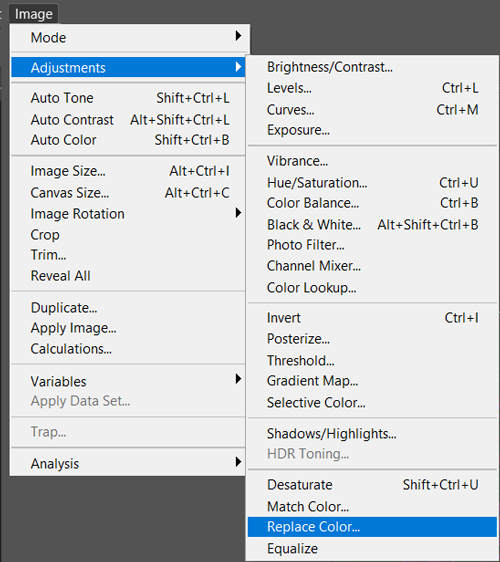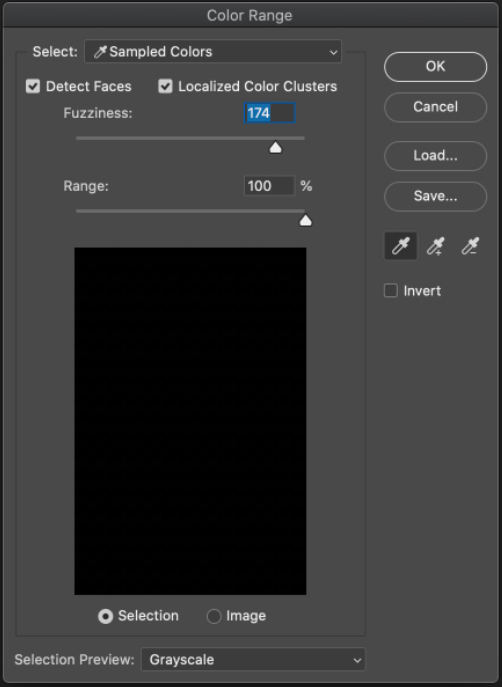This is the content.php article
Month: May 2022
This is the content.php article
When you update your brand’s colors, they’ll also need to change across your existing files. We’re here to give you some of our best practices for updating the colors across the most common design tools, so your brand stays consistent online and off.
Changing color palettes
To avoid drastic color shifts when printing documents, you’ll need to ensure that your color palettes and profiles for your existing templates are up-to-date.
InDesign
As you begin to update your document’s color palette, InDesign makes it relatively simple. You can make global changes in your file instead of going through each visual element individually.
1. To start, open your working template file and go to swatches. Hopefully, you’ve already organized your palette colors by their PMS number or brand name.
2. Select the swatch you want to change and right-click to bring up a flyout panel.
3. Choose Find this Color in the menu, which will bring up a Find/Replace dialog box, as shown below. The Find/Replace dialog box also comes up when using the CMD+F shortcut and selecting the color pane.
4. From the dialog box, go to the Color tab, where you’ll find the dropdown boxes to change your original swatch to the updated one by choosing Select New Color Swatch.
5. Double check that your colors are correct and hit Change All, which changes all of the colors in your document.
Photoshop
In Photoshop, you have a few different options to work with depending on the complexity of your template. You can make color adjustments to individual layers and masks. We recommend doing this for quick edits where you don’t have to worry as much about fine details.
But for global changes, the general Replace Color option in Photoshop is helpful when you want to keep fine details intact during commercial printing.
1. First, go to the main menu and choose Image->Adjustments->Replace Color. Then you’ll need to determine which view you need. We jump back and forth between Selection (displays the masked areas of the object in black, white, and gray) and Image (shows the entire area).

2. You’ll use the Eyedropper tool to choose the colors you want to replace. To add to the selection, hit Shift-click. When you need to remove parts of the section, Option-click (Mac) or Alt-click (Windows) will subtract from the image.
3. As you make adjustments, you’ll need to sharpen or soften the image to control the fuzziness around its edges. This helps avoid sudden color shifts in your file. You can do this by moving the Fuzziness slider back and forth until you get the result you’re looking for.

4. Now, you can switch the actual color by double-clicking the image you’re now looking at and using the Color Picker. You can also drag the Hue, Saturation, and Lightness sliders, but you may get more unreliable results. We recommend using the color pickers, which give you the option to put in the RGB, CMYK, LAB, or HEX value for the replacement color.
5. Finally, you’ll click Save to preserve the new color in your Photoshop template.
Illustrator
The world’s most user-friendly vector software, Illustrator, makes changes to files super easy.
1. In your Swatches panel, double-click on the color you want to change in the file. If it doesn’t already appear on your canvas, you can access it by selecting Window->Swatches.
2. Once the panel is open, double-click on a swatch, which will bring up the Swatch Options dialog.
3. Check the Preview box to see what the new color looks like in your file.
4. Then choose your Color Type (Process Color is the most common). You’ll select your Color Mode, which, if you’re using Process Color, will be CMYK. Insert the CMYK value for the new swatch.
5. Before saving the swatch, make sure that the Global option is selected.
And then voilà! You’re done!
Proactive brand consistency pays off
We’re big proponents of companies using a style guide to keep their marketing in check. Unfortunately, even when a business has one, internal teams may not use it all the time. So if there are changes to the company’s color palette, the brand style guide needs to be updated, so everyone working on print and digital assets has the most up-to-date direction.
Being proactive instead of reactive about your visual elements leads to more efficiency in your marketing and brand management. Plus, you’ll avoid the unwelcome inconsistencies that make your brand look unprofessional.
This is the content.php article
This is the content.php article
This is the content.php article
This is the content.php article
Look around you right now. The computer you’re looking at this article on, and the snack you’re about to pop into your mouth were likely made by name-brand companies with a long history behind them.
Long before they appeared in stores or streamed into our homes, the companies below wanted to solve a problem, delight, and in some cases, entertain. Let’s look at their history and how people experience these brands today.
IKEA
IKEA has furnished homes around the world for decades. Even though flat pack existed long before the company, in 1953, IKEA combined the idea with self-assembly products. This innovation was the starting point for people to conveniently transport and put together inexpensive, stylish furniture without relying on expensive movers.
By the 1960s, IKEA stores began experimenting with full-service restaurants, which removed interruptions in the shopping experience. Since then, the restaurant has become synonymous with grabbing an order of Swedish meatballs and cake. Out of the 650 million customers the brand gets each year, 30% come just for the food.
Why people love it
IKEA cares about how people live. And they listen to their customers. In 2014, they embarked on their first Life at Home report, which delved into the routines of buyers. They use these insights to design better, more usable products. Ones that actually fit the lifestyles of those bringing them into their homes.
As a company, IKEA offers furniture that’s both contemporary and minimalist. Because of this, the brand appeals to younger people and first-time homeowners who may be on a budget yet still want to buy quality furnishings that are easy to take apart and reassemble when it’s time to move.
We might venture to say Google contains the largest repository of knowledge in human history. Since 1998, it’s enabled us to connect, communicate, and navigate the vastness of the internet, unlike never before. As of now, it has over 50 internet products and services, from Gmail and zoomable Maps and satellite views to Android mobile devices and tablets.
Why people love it
What began as a search company has expanded into every sector of our personal and business lives. Heck, Google is even a verb. We google recommendations for beach destinations and shoes. And with the acquisition of YouTube it’s made it possible for people around the world to gain new experiences that influence our digital lives.
Disney
The Disney brand is one of the most recognized and positively associated brands globally. Since the iconic Steamboat Willie (1928) featuring the first cartoon with Mickey Mouse, kids and kids at heart have had a warm spot for the Disney brand. And with network, film, and other media companies like ABC, ESPN, Pixar, Marvel Entertainment, and Lucasfilms, Disney is the number one provider of family entertainment.

Even though they’re known for delivering world-class experiences for people on land in their theme parks, since 1998, Disney has offered fun at sea with their own cruise line. People can have a luxury experience meant for jolly sea-lovers.
What people feel about it now
Part of the appeal of Disney is that you have permission to be a kid. For a few hours or days, you can leave your worries behind to go on an adventure. Disney transports people of all ages into a fantasy world where almost anything is possible. As George G. Q. Quitoriano explains,
“I think the Disney brand is so beloved because the Walt Disney Company has mastered how to create fans and build long-lasting relationships with them. In some cases, their adult fans actively induct their children to become Disney fans as well, helping grow the fandom for across generations.”
Its characters transcend age, gender, and all of the other labels we use daily to if only for a moment, give us a glimpse into a world where magic exists.
Heinz Kraft
Before merging with the Kraft Foods Group in 2015, Heinz provided us with sauces and other meals appearing on our dinner tables. The brand was most well-known for its ketchup, which covered hot dogs and burgers during ball games and barbecues. With over 200 brands under the Kraft Heinz name, it continues to evolve its offerings, giving us gems like Brunchables, the more refined version of the classic Lunchables.
What people think of its products now
Back in the day, no lunch or dinner was complete without a bottle of Heinz ketchup on the table. It’s still a nostalgic product and sometimes a guilty pleasure for those wanting to indulge in their childhood favorites. But the kicker is the ham and cheese, DIY snack, Lunchables, which people still remember with a particular fondness, like Carissa Tzeng.
“Remember these bad boys? They were the sh*t during my preschool/kindergarten/early elementary years. All the cool kids had them. During recess, it was Lunchables galore! Timmy would trade some of his crackers for cheese with Ben, and Tiffany will give Laura all her ham because she only likes cheese! Meanwhile, Johnny will go around collecting everyone’s leftover pieces and make a mega cheese and ham cracker sandwich that everyone was envious of. Everyone wanted to be Johnny!”
LEGO
LEGO is a toy brand that has lived up to its Danish meaning of “play well.” Since 1932, children have built — and continue to build — structures made from their wildest imaginations. It’s one of the few companies that has earned the title of “Toy of the Century.” Twice.

And the brand continues to live up to the illustrious award to this day. In 1978, LEGO introduced the world to the Minifigure, which became a staple of the brand’s playsets, eventually getting a staring role in The LEGO Movie series.
How people experience LEGO in their daily lives
Over the last decade, LEGO has become a huge part of pop culture. From Star Wars-themed sets and Batman-inspired movies, LEGO has given both children and adults a reason to play. It continues to make us laugh, think, and of course, build, as Robbie Frost puts it:
“Anyone can play LEGO games. LEGO was made as a product for kids, but it’s grown into so much more. If you enjoy LEGO games, go ahead and play them. They’re not immature, and the people who say they are are the true immature ones. As a wise man once said: “Games are meant to be fun.”
Conclusion
Many of the brands featured here were passed down through the generations. One thing is certain for each of them. They have never been afraid to change with the times. Each one continues to take daring challenges and look for unique ways to innovate the experiences of their biggest fans.
They also believe in partnering with complementary brands that enhance their products and services. So the next time you use one of these products, think about their story and how they still play such a significant role in our lives.


